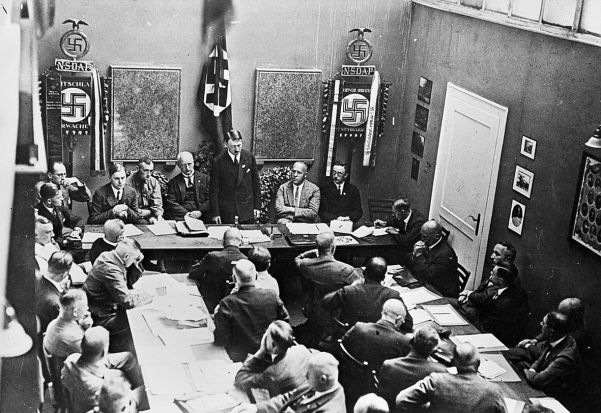Febuary
Politics, Nazi Party

It was not until January 1925 that the official ban was lifted on the NSDAP, and on February 27, 1925, in the Bürgerbräukeller in Munich, Hitler assembles the party faithful to re-establish the NSDAP. After re-establishment of the NSDAP the “interim” Völkischer-Freiheits-Bewegung is dissolved. Service time with the party is counted from February, with the time from that date to January 30, 1933 counting double in recognition of the Kampfzeit (“time of struggle”) by members of the Old Guard. Himmler acts as General Secretary to Gregor Strasser who, in February 1925, agrees to disband his party and assimilate it into the reformed NSDAP.
April
Nazi Party, Rebirth of the SS
Hitler orders the former member of the Stosstruppe Adolf Hitler and his chauffeur, Julius Schreck, to form a new guard unit. Two weeks later, Schreck forms a new headquarters guard and re-christens it the Schutzstaffel or SS Protection Squad, though still called the Stosstruppe Adolf Hitler. Initially the new SS consists of only eight men, most of whom have previously been members of the Stosstruppe Adolf Hitler. Schreck, however, devises a plan to set up SS units throughout Germany.
A circular was sent out in September 1925 which called on party groups to set up Schutzstaffeln. These were to be small, élite squads of 10 men and one commander, made up of respected young men in their communities and totally loyal to Hitler. By January 1926 Schreck’s plan had worked and the SS had established itself on a national level. Josef Berchtold, the original commander of the Stosstruppe Adolf Hitler, returned to Germany from exile in Austria and in April 1926 took over command of the SS from Schreck.
